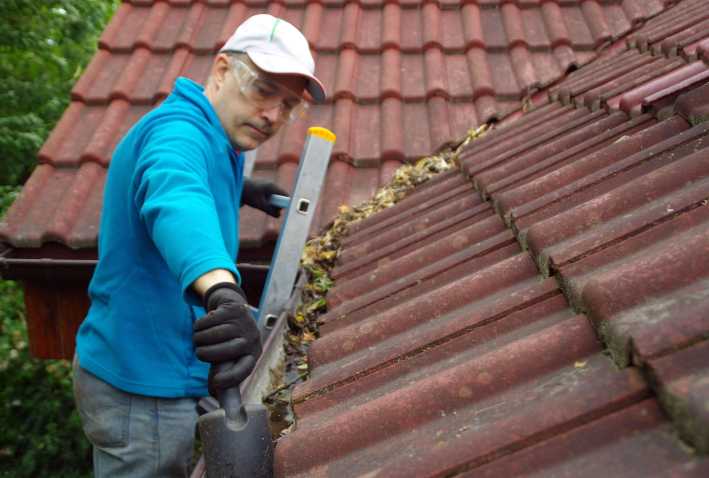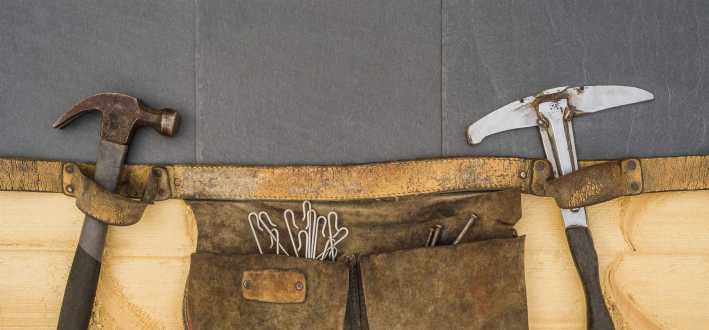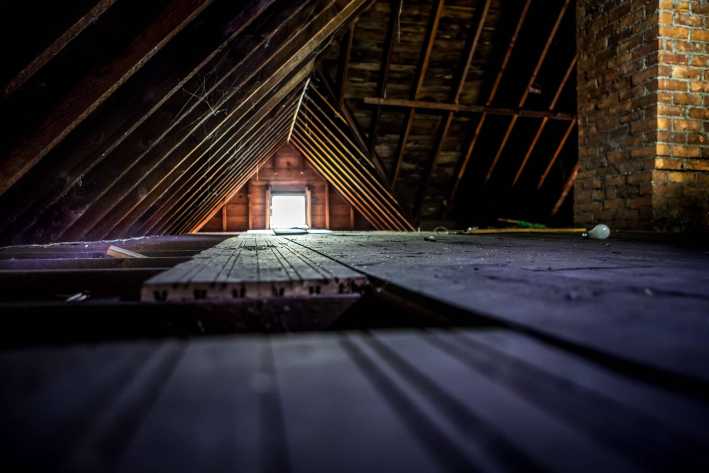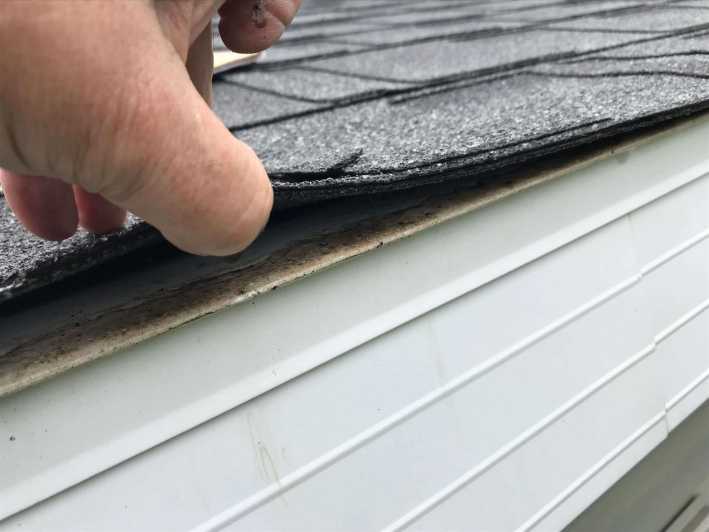
Do solar panels increase home value? - Expert opinion on...
Despite multiple government programs and rebates, installing solar panels is a costly investment...
Whether you're leasing the house or living in your own one, keeping the roof in good shape should be your utmost priority. Drainage problems, clogged gutters, displaced joints, missed shingles, damaged flashing - the list of possible issues is endless. Unfortunately, every third homeowner neglects regular roof inspections, even visual ones. First off, an average person does not know how to tell the first signs of roof leakage and starts giving the alarm when it's too late. Secondly, we often don't get the importance of professional roof inspection, thinking of it as unnecessary spending. This article is intended to explain how proper maintenance can increase the roof's useful life. We made up a roof inspection checklist for those who don't feel like hiring an expert. Follow our recommendations to spot the first signs of roof deterioration and avoid costly repairs.

Table of contents
1. How can the absence of scheduled roof inspections draw you into losses?
2. Why inspect the roof at least twice a year?
3. The complete residential roof inspection checklist for DIYers
4. Why opt for a professional roof inspection?
Did you know that the common causes of house structural damage come from roof issues? Even minor leaks can take their toll on construction integrity and may become a real headache. The roof is an integral part of a house that keeps its structure intact. If it is not regularly inspected, the wall framing and ceiling joists may fall victim to moisture getting from outside.
A thorough roof checkup should be done not less than twice a year. You can learn to do it yourself, exploring the basics of roof maintenance and buying the required supplies and equipment. However, it is more cost-effective to entrust this task to a knowledgeable roof inspector who can reveal hidden issues and tell when the roof needs to be replaced or repaired.
Keep reading to determine what steps are included in a residential roof inspection checklist and how to take advantage of its regular maintenance.
How often do you perform a roof inspection? Once in two-three years or even less frequently? Some people believe that a recently replaced roof does not need to be inspected. This misconception leads to massive losses, and below we will prove it in numbers.
Let us match the spending on home restoration and professional roof inspection. The average rate of a certified roof inspector in the US varies from $150 to $325. According to the National Roofing Contractors Association, this procedure should be done at least twice a year. So, let us assume that the average roof inspection cost is $328 and multiply this sum by 2. So, the annual budget needed to keep your roof under proper supervision is $656.
And now, let's get down to the cost of house restoration services that commonly result from roof leakage. Ceiling water damage repair starts at $50 per square foot and goes up to $250. It covers leak fix and drywall replacement. The cost of a floor repair, if the undersurface does not need to be ripped up, is $700 and higher. The floor joist repair is a labor-intensive job that evaluates thousands of bucks. When a roof leakage is massive and long-lasting, you may also need to replace a rotten and highly damaged roof. The national average cost to install a new roof is around $10.200. However, this price might be much higher depending on the region, roofing material, and additional complications. If the basement is also affected by flooding, you need to pump the water out and dry it. The issue price is $1.500. The mold growing is another problem to handle if the roof leaks. You can expect to pay from $500 to $4.000 for most mold removal jobs, depending on the size and severity of the problem.
The mentioned list of issues resulting from water damage is not complete, and we can only assume how expensive the whole scope of home restoration and cleanup services might be.

Regular checkups are necessary to extend the roof's service life and prevent unpleasant surprises. The best seasons to accomplish them are early spring and late fall. The unscheduled inspections might be initiated in extreme cases or by a homeowner's request.
Here are the top reasons to get started with your roof inspection as soon as possible:
The average lifespan for most single-ply roofs is 20 years, while their multi-ply counterparts can serve for 5-10 years longer. Those roofs made of long-lasting materials like slate, clay, or cement have better resistance to external factors and last about 50 years. However, no matter your roof construction or material, it undergoes normal weathering and aging. Regular inspections can prevent premature roof aging and save you a great deal of money on home repairs.
Weather extremes like high wind, pouring rain, or wild hail are most likely to affect your roof's integrity, entailing further repairs or insurance claims. Once the element's eruption is over, the top of your home should be inspected immediately. The best way is to apply to your insurance company for a free roof inspection and loss coverage. Please stay away from storm chasers, as most of them are quacks aimed to lure your money.
According to our observations, around 65% of all roof inspections are triggered by visible signs of leakage, like uncolored water spots or wet roof decking. These signs indicate more severe issues like broken shingles and flashing or poorly sealed valleys. A roof inspection should be done immediately to discover leak sources and limit their spread.
When you see plants or weeds start growing in your rain gutters, the time is ripe to call out a roofing contractor to inspect the site, clean your guttering system and install a proper guard. When dirt and moisture accumulate in your gutter, they create a favorable environment for vegetation that penetrates the roof membrane and ruins it.
While security matters seem not apparent concerning roof inspection, underestimating them could prove costly. The top of the house is one of the areas for thieves to break in. If your roof possesses visible spaces for entering, like holes, unlocked roof hatches, or a loose skylight, bad guys will surely take advantage of them. Scheduled roof inspections help detect all security breaches and eliminate them to ensure your peace of mind.
The routine inspection is your surefire way to discover roof issues before they affect the integrity of your house. There are multiple adverse effects of neglecting regular roof maintenance, so you should put that point at the top of your housekeeping agenda.
Our platform has been cooperating with leading roofing experts around the country for years to come. We boast a ramified network of certified companies providing roof replacement, repair, and inspection services. We talked to their practicing representatives and collected the primary points that come to their roof inspection checklists.
Bookmark this simple residential roof inspection checklist to refer to it when the need for a thorough roof checkup arises.

1. The heavy-duty ladders for roofing works
Options:
2. A roof safety harness
Options:
3. Work boots with ideal traction
*this footwear should be made of thick natural leather with protection pads and a non-slippery sole
4. A pair of working gloves
Options:
5. A safety helmet ball cap
6. A toolbox

If you check your attic ventilation in summer, it's enough to touch the ceiling to determine whether it works properly. If it's warm, your attic fans are broken. In winter, you may distinguish ventilation problems by looking at the eaves. If they're covered with thick ice, the water probably gets underneath shingles because of poor ventilation. In other seasons, you can grab a flashlight and inspect your attic for signs of moisture and rot.
When evaluating your attic insulation, pay attention to the areas around building components like HVAC ductwork, chimney, routes for electrical wiring, light fixtures, and plumbing stacks. They should be properly sealed to avoid water penetration and energy loss. Mold and dampness are the signs that point to poor insulation. Supplement the existing insulation or replace it to stop further fungi growth.
Pros always check the integrity of roof structure during routine inspections. Everything from poorly placed bracing and tie-downs to damaged ceiling joists points to wrong roof balancing. These problems should be tackled ASAP as they might jeopardize your family's safety.
Blistering paint and stains are the apparent signs of interior leaks. If you see water spots on your walls or ceiling, the moisture has likely entered the house through the roof. Damage to shingles and decking, as well as insulation deterioration, might be the culprit.
When the roof is close to the end of its service life, it becomes vulnerable to leaks. When water accumulates on your roof for a long time, you can notice the dark areas on your ceiling and mold on walls and wood rafters. To stop the further growth of these fungi, you need to remedy the roof leak. The next step is to dry out wet spaces with dehumidification and apply a fungicide.

When it comes to outdoor inspections, the first thing to check is the condition of shingles. You can find your shingles are curled, buckled, or broken. The nature of these issues is different. While missing shingles might result from poor installation or extreme weather conditions, buckling or curling points to the poor attic ventilation.
Roof flashing funnels rainwater away from skylights, vents, and chimneys. After a storm or heavy hail, a flashing often becomes damaged or loosened. When this critical roof element stops performing as it should, water penetrates the roof deck and cause massive leaks. If you want to tackle the issue yourself, follow these steps. Remove the affected flashing parts, check if the underlying roof structure is intact, and reinstall the new flashing and shingles.
The roof elements like soffit and fascia keep the house dry no matter the weather outside. The fascia is a vertical edge located at the conjunction site between the roof and the gutter. It protects the wooden board from water damage. The soffit is placed under the roof's eave and serves for attic ventilation. It prevents moisture accumulation and ensures proper heat expulsion. Experts always inspect the soffit and fascia for issues like cracks and holes as well as staining and flaking paint. These worrying signs might signal airflow blockage, water damage, or pest infestation.
A drip edge has a slanted construction and is attached to the roof's edge to divert rainwater. The wooden fascia becomes vulnerable to water and decay without this crucial element. Check if your drip edge is in place and not sugged. If you don't have one, consider building it to safeguard the home's structure from water leaks, cracks, fungus, and infrastructure problems.
Rain gutters collect water from the roof and channel it away from the home's foundation through a downspout. If your guttering system is clogged, rainwater may get underneath the shingles and cause massive damage to the roof. Improper water channeling may also affect your foundation and flood the basement. Check if your gutters are free from holes, cracks, moss, and rust. They should not be clogged with debris and shingle granules. Damaged or knocked down rain gutters should be replaced right off the bat.
A thorough roof checkup is a task for a licensed inspector well-versed in building code and safety regulations. Except for a bunch of professional tools, a person who performs an inspection should have valid certification and understand the roof's structure. It is hardly possible to become a self-taught roof inspector without proper expertise, even if you have a checklist at your fingertips.
You can check out the roof on your own from time to time to ensure no visible damage or leakage exist. However, you also need a roof inspector to come to your site at least twice a year for a detailed interior and exterior inspection. Professionals do not only know how to find the source of the problem, but they can also do the needed repairs right off the bat to avoid its worsening.
If you don't want to miss something important during the inspection, entrust this task to roofing contractors from MyHomeQuote's nationwide network. We pride ourselves on having close connections with thousands of dedicated experts you can hire at a button click.
Bid farewell to emergency leak repairs! With scheduled inspections and timely maintenance, you will be able to keep your roof in mint condition for years to come.
GET THE ESSENCE OF RELEVANT HOME
IMPROVEMENT TOPICS IN LESS THAN 5 MINUTES

Despite multiple government programs and rebates, installing solar panels is a costly investment...

The service life of bathroom windows is short compared to other windows in the house. Regular exp...

Stay tuned!